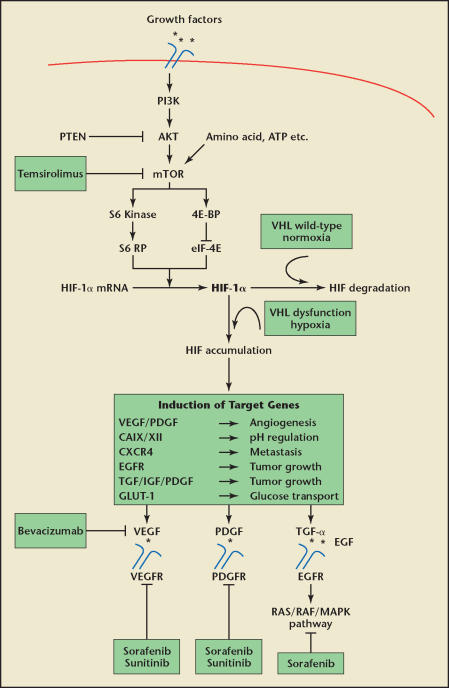Figure 3.
Regulation of hypoxia-inducible factor-1α (HIF-1α) and drug interventions currently in use. Activation of receptor tyrosine kinase (RTK), such as Rous Sarcoma oncogene (SRC) and the human epidermal growth factor receptor 2 (HER2), insulinlike growth factor (IGF), and epidermal growth factor (EGF) receptors, stimulate the PI3K-AKT-mTOR pathway. These pathways lead to the phosphorylation of S6 kinase and 4E-BP1. S6 kinase and 4E-BP1 lead to the translation of HIF-1α messenger RNA (mRNA). The hypoxia-induced pathway is linked to the VHL dysfunction in renal cell carcinoma (RCC). HIF regulates the expression of an array of genes that encode proteins regulating angiogenesis, pH, metastatic spread, tumor growth, and glucose transport. The drugs currently preferred for the targeted treatment of metastatic RCC are depicted here. ATP, adenosine triphosphate; EGFR, EGF receptor; mTOR, mammalian target of rapamycin; PDGF, platelet-derived growth factor; PDGFR, PDGF receptor; PI3K, phosphoinositide 3-kinase, TGF-α, transforming growth factor-α; VEGF, vascular endothelial growth factor; VEGFR, VEGF receptor.

